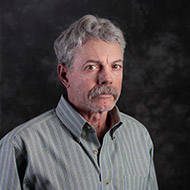Conventional wisdom holds that the initial examination for a flight instructor certificate is the most exacting checkride applicants ever take. That’s not always true in practice. The newest CFII on our staff described his instrument instructor test with a respected designated pilot examiner as more grueling than his original CFI ride with an FAA inspector. By the time he got his temporary certificate, Mike had endured six and a half hours of oral examination, 90 minutes in flight, and lunch with his tormentor. To his credit, he wasn’t upset at having had to sweat bullets through what’s often perceived as an easy add-on. In fact, he was grateful.
 Why? Think about the industry’s current structure. Our 26-year-old colleague’s history is impressive but not entirely unusual: He earned his private pilot certificate and instrument rating in college; after he started working (with us) he moved on to the commercial while thinking ahead to the CFI. He managed to get the former as soon as he attained the mandated experience requirements and won the latter after just 10 more hours in the cockpit.
Why? Think about the industry’s current structure. Our 26-year-old colleague’s history is impressive but not entirely unusual: He earned his private pilot certificate and instrument rating in college; after he started working (with us) he moved on to the commercial while thinking ahead to the CFI. He managed to get the former as soon as he attained the mandated experience requirements and won the latter after just 10 more hours in the cockpit.
The double-I came a little more gradually, but as of his checkride his career flight experience was on the order of 400 hours, with maybe 70 hours of instrument time that included no more than 10 in instrument meteorological conditions. Other seasoned CFIIs we contacted recalled passing their checkrides with as few as five hours in actual; one commented that flying charters in real weather had improved his teaching skills immensely.
This means that many of us learned or are learning instrument flight from teachers whose understanding of the subject is essentially theoretical: They can navigate from here to there under the hood and fly the approach, but they haven’t had to do it when finding the airport was in any doubt. We, their students, launch into the IFR system without much sense of what a missed approach actually looks like, counting on good training and the power of reason to buy us time to learn. Given reason’s track record, that training had better be good!
As our friend recognized, this is why rigorous checkrides—for CFIIs in particular—are a private as well as public good. For instruction based on theory to translate into successful practice, the teacher’s command of theory must be complete.



